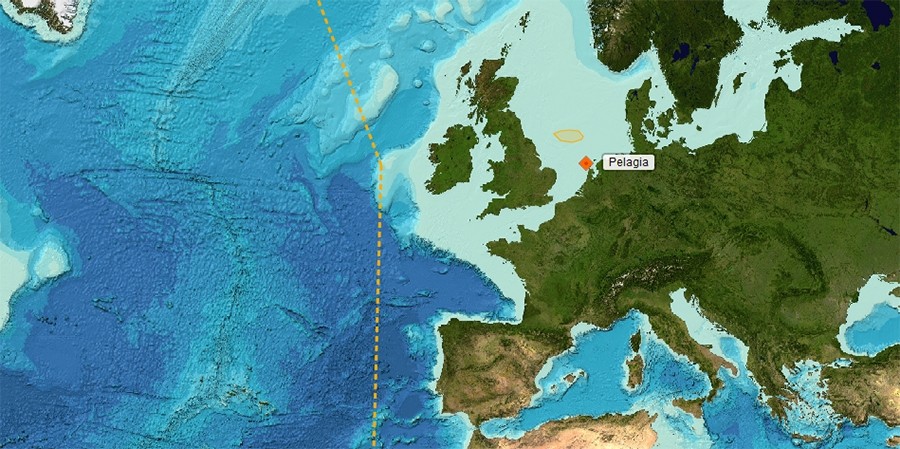News from the Pelagia
Where is the Pelagia?
The RV Pelagia is the NIOZ flag ship. She is built in 1991 and overhauled in 2010. With an overall length of 66 m, this versatile and stable vessel is suited for research on both coastal seas and open oceans (except for the polar regions).

Follow the current position of our flag ship via this map.
NIOZ@SEA blogs
Follow the news from our researchers on board.
Monday 16 June 2025
TwinDEEPS Expedition
Welcome to the TwinDEEPS voyage to the Gorringe bank! This expedition is made in scope of an EU-funded project that brings together an international team of researchers, students and technicians from Portugal (CIIMAR), The Netherlands (NIOZ), Norway…
Friday 09 May 2025
The PHOSFLUX Expedition
Welcome everyone! Delighted that you take an interest in our work at sea. The PHOSFLUX expedition is an NWO-funded collaborative effort with international students and researchers from Dutch and Portuguese universities and research institutes. The…
Monday 14 April 2025
Seaweeds at Sea 10-day Expedition
The focus of the University of Amsterdam’s “Seaweeds on Shore and at Sea” course for 2025 is the World’s largest algal bloom: Holopelagic Sargassum in the Western Tropical Atlantic. This course is being largely supported through an NWO-Caribbean…
Tuesday 28 January 2025
NIOZ@Sea: The TIP-TOP Expedition
Several tipping points in Earth’s system could be crossed in the near future due to human activities, and hence there is a need to understand such potential abrupt changes on Earth. During this cruise, an international team of researchers, led by…
Monday 19 August 2024
NIOZ@SEA | Methane-emission-in-the-North-Sea-III
Methane escapes from the seabed of the North Sea in various places. Methane is a potent greenhouse gas and its release into the sea and subsequent release into the atmosphere can contribute to global warming. The methane release would mainly be…
Monday 17 June 2024
NIOZ@Sea: The Weeds of Change expedition
The brown macroalgal genus Sargassum, the namesake of the Sargasso Sea, is an essential habitat and refuge for many organisms including endemic species. Historically, this so-called 'golden rainforest of the Atlantic Ocean' was constrained to the…
Wednesday 01 May 2024
NIOZ@Sea | 2nd North-Sea Atlantic Exchange (NoSe) expedition
The biologically productive North Sea impacts the global climate through exchange of carbon and nutrients with the Atlantic Ocean. The North Sea is a very productive coastal sea. A lot of carbon dioxide (CO2) can be taken up through physical,…
Wednesday 06 March 2024
NIOZ@SEA | Final recovery of 3D high-precision temperature array
After several years of preparation, a team of NIOZ-NMF constructed a large mooring array in the harbor of La Seyne-sur-mer (Toulon, France) in 8 days of October 2020. The compacted array of 45 instrumented lines mounted on a steel cable grid inside a…
Monday 26 February 2024
Final recovery of 3D high-precision temperature array
Tuesday 09 January 2024
SEALINK Cruise
Between the 4th and 23rd of January, a team of scientists are on board the RV Pelagia to collect a second set of data and samples for the SEALINK project. This is a large, interdisciplinary project running from 2021 to 2025 in which Dutch and…